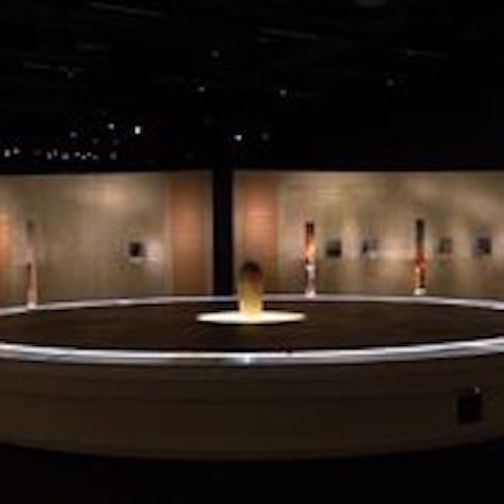Dead Sea Scrolls Headline US Show of Israeli Artifacts
Written by Mara Vigevani/TPS on March 16, 2018
“This is the biggest exhibition we have ever done outside Israel,” said Dr. Miki Saban, Director of National Treasures at the IAA.
Two manuscripts from the Dead Sea Scrolls collection will be the centerpiece of a 600-piece show presented by the Israel Antiquities Authority in Denver, Colorado beginning Friday that Authority officials say will be the largest display of Israeli artifacts ever presented abroad.
The exhibition, which is scheduled to run until September 3, will display a wealth of archeological findings at the city’s Museum of Science and Nature, including a three ton stone from the Western Wall, well-preserved organic materials like leather sandals and food, religious jewelry, weapons and more.
But it is the ancient scrolls that will take center stage. The IAA said in a release that the exhibition would feature a total 20 scrolls, but added that due to strict preservation requirements, the artifacts could not be out of the country for more than three months. To solve the problem, the first installment of 10 scrolls will remain in Denver for three months, at which time they will return to Israel and be replaced in Colorado by 10 more specimens.
Upon returning to Israel, the scrolls will be kept for at least five years in an IAA climate-controlled vault, in conditions simulating those of the Judean Desert caves in which they were found and preserved for more than 2,000 years.
The first collection of Dead Sea Scrolls, which date from the late 1st century BCE is called Tohorot (Purities) and discuss issues of ritual purity, which were a very significant factor in daily life during the time of the Second Temple. Amongst other rules, the scroll states that ritually impure individuals had to be isolated not only from those who were ritually pure, but also from individuals with different types of impurity.
Discussion of these issues also appears in later rabbinic literature, particularly the Talmud (compiled in Israel and Iraq from about 200 CE to about 500 CE).
The second scroll, Musar leMevin (Instruction to the one who Understands), discusses ethical conduct, particularly relating to business and to marriage. It is likely a treatise written by a teacher for his disciple and is similar in character to the biblical book of Proverbs. The text includes instructions to a disciple on the moral conduct that will enable him to avoid evil behavior and achieve success in all areas of life, and especially the high spiritual level attained by the righteous.
The IAA said that one unusual characteristic of the work is the constant repetition of the Hebrew phrase raz nihyeh, a term whose meaning is still a matter of scholarly debate: Some scholars translate it as “the secret of existence,” but it could also mean “the approaching mystery.” The messages in the scroll are presented as information coming directly from God and conveyed through the sages to their disciples.”
The Dead Sea Scrolls are a collection of 981 documents in Hebrew, Aramaic and Greek discovered between 1947 and 1956 in a hidden cave at Qumran, along the north-west shore of the Dead Sea and dating to the Second Temple Period (530 BC – 70 AD).






